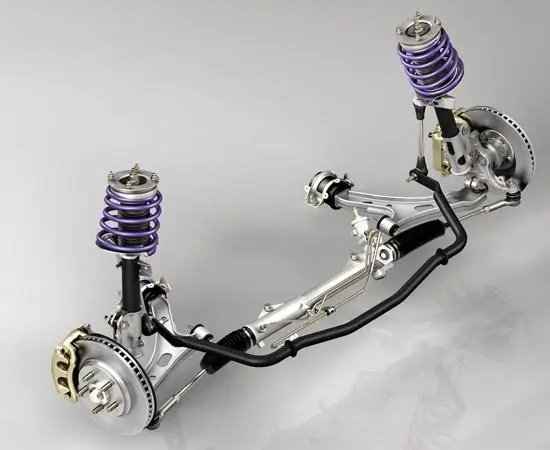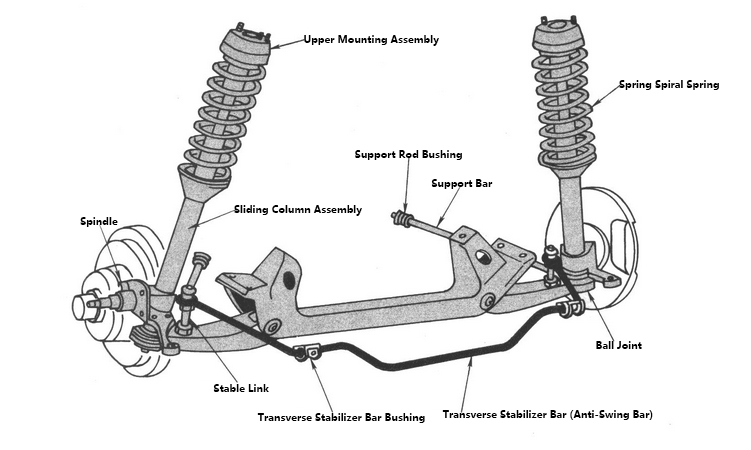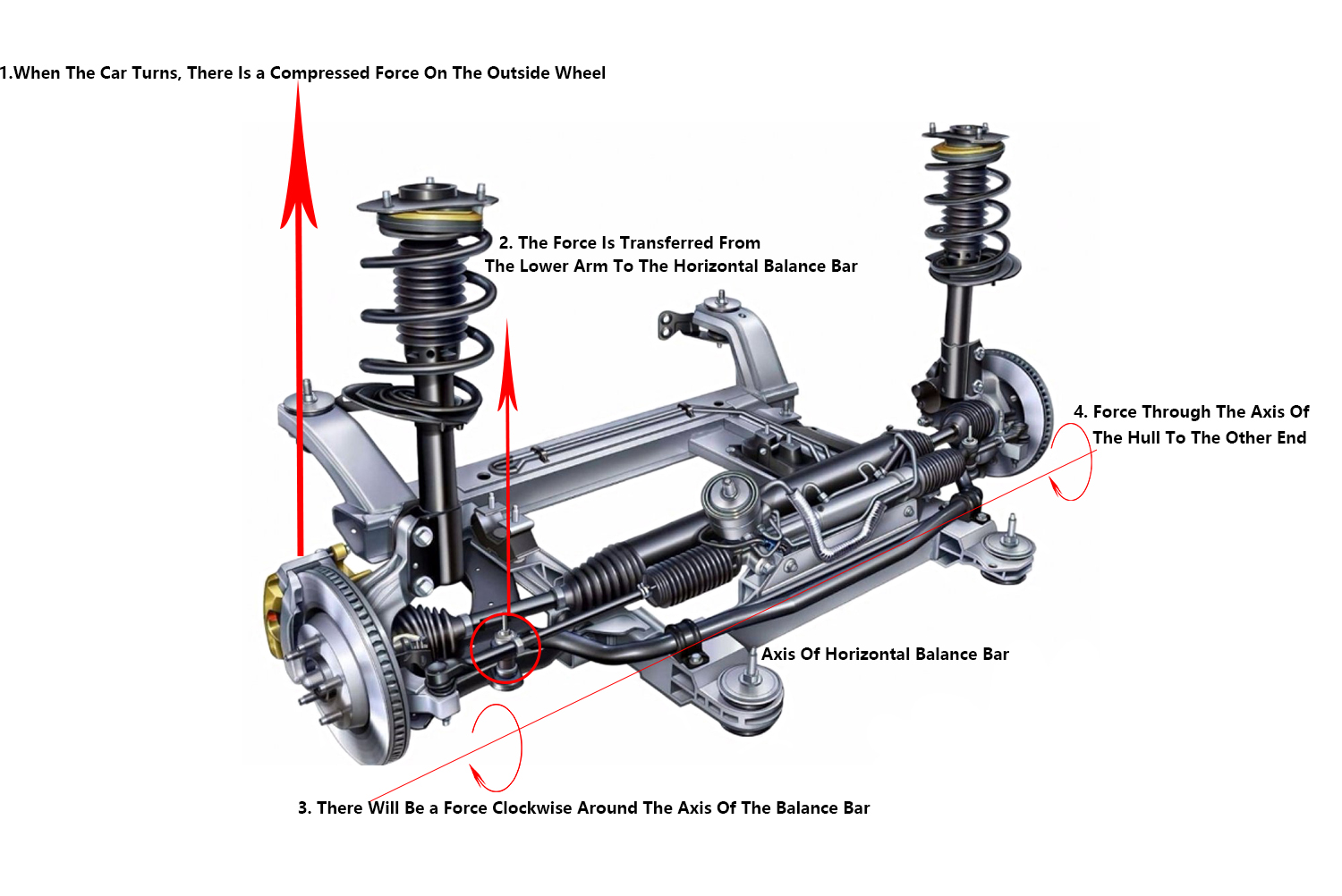What is the role of the lateral stabilizer bar for automobiles?
Transverse Stabilizer Bar Also Known As Anti - Tilt Bar, Balance Bar
It is an auxiliary elastic component in automobile suspension.
The role of the lateral stabilizer bar is to prevent excessive tilting of the car body when turning and improve the stability of the car on uneven roads.
The transverse stabilizer bar is a torsion bar spring made of spring steel. It is shaped like a "U" and is placed horizontally on the front and back of the car. The middle part of the rod body is hinged with a sleeve and the frame, and the ends of the rod are respectively fixed on the left and right suspension. When the body only makes the vertical movement, the two sides of the suspension deformation is the same, the transverse stabilizer bar does not work. When the body tilts, the two sides of the suspension jump inconsistent, the transverse stabilizer bar torsion, the elastic force of the rod body becomes the resistance to continue to roll, play a role in lateral stability. A typical horizontal stabilizer bar.

The Transverse Stabilizer Bar Constitutes The Structure
The transverse stabilizer bar is a torsion bar spring made of spring steel. It is shaped like a "U" and is placed horizontally on the front and back of the car.
The middle part of the rod body is articulated with a rubber bushing and the body or frame, and both ends are connected with the suspension guide arm through the rubber pad or ball pin at the end of the side wall.
The connecting device connects the end of the transverse stabilizer bar with the lower control arm. Because a great deal of force is transmitted through the connecting device and the bushing, it is easy to be damaged. The damage of the connecting device and the bushing will cause unsafe vehicle handling and noise.

Importance Of Transverse Stabilizer Bar
When bending, the suspension of the bending inner wheel is extended and the suspension of the bending outer wheel is compressed, then the anti-roll bar will produce torsion suppression. It will exert a downward force on the suspension of the curved outer wheel, and an upward force on the suspension of the curved inner wheel. The forces applied to the left and right suspension are equal and opposite and contain each other. Too soft anti-tilt bar in the independent suspension of the car will cause too much camber Angle, reduce the tire grounding area, too hard will cause the tire can not be close to the ground, affecting the handling. For a curved inner wheel, the force exerted by the anti-roll bar on the wheel is opposite to that exerted by the spring, which presses the wheel back to the ground, while the anti-roll bar lifts it off the ground. If the anti-roll bar is too hard, it will reduce the force to push the wheel back to the ground. If this happens to the driving wheel, it may reduce the grip of the inner wheel when refueling out of the corner, causing the tire to idle.

Working Principle Of Transverse Stabilizer Bar
If the left and right wheels jump up and down at the same time, that is, the body only moves vertically and the two sides of the suspension deformation is equal, the transverse stabilizer bar rotates freely in the bushing, the transverse stabilizer bar does not work.
When the deformation range and body for the road on both sides of the suspension lateral tilt, nearer the spring support on only one side of frame, the side of the stabilizer bar end is moving upward relative to the frame, and the other side of the frame from spring support, at the end of the corresponding stabilizer bar is relative to the frame down, however in the body and frame, transverse stabilizer bar for frame in the middle of no relative movement. In this way, when the body tilts, the longitudinal part of the stabilizer bar on both sides deflects in different directions, so the stabilizer bar is twisted, and the side arm is bent, which increases the angular stiffness of the suspension.
The torsional internal moment generated by the elastic stabilizer bar interferes with the deformation of the suspension spring, thus reducing the lateral tilt and lateral angular vibration of the body. When the torsion bar arms at both ends jump in the same direction, the transverse stabilizer bar does not work. When the left and right wheels jump in the opposite direction, the middle part of the transverse stabilizer bar is torsion. If the vehicle roll Angle stiffness is low and the body roll Angle is too large, the transverse stabilizer bar should be used to increase the vehicle roll Angle stiffness. Transverse stabilizer bars can be installed separately or at the same time on the front and rear suspension as required. When designing the transverse stabilizer bar, the ratio of the roll Angle stiffness of the front and rear suspension should be considered as well as the total roll Angle stiffness of the vehicle. In order to make the car have understeering characteristics, the roll Angle stiffness of the front suspension should be slightly larger than that of the rear suspension.
Therefore, most models are installed in the front suspension transverse stabilizer bar.
We will do a good job in every content,do our best to solve the problem for each customer,Thank you for your reading.




Leave A Comment